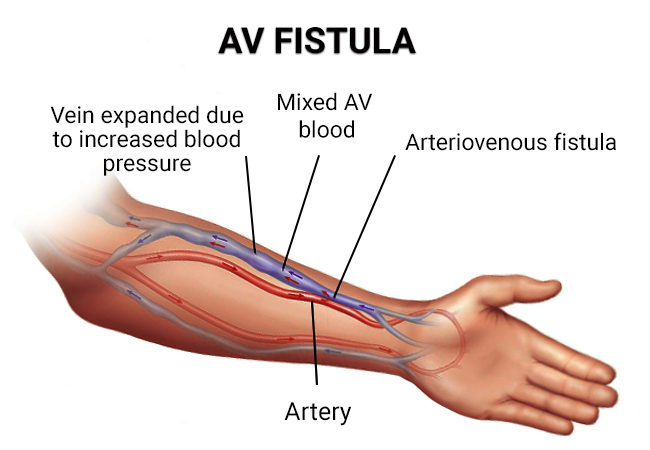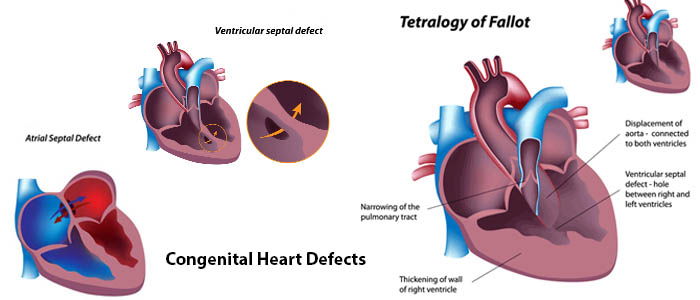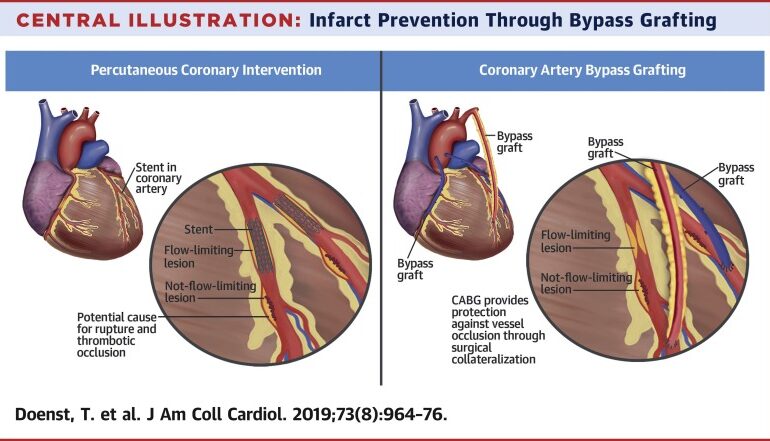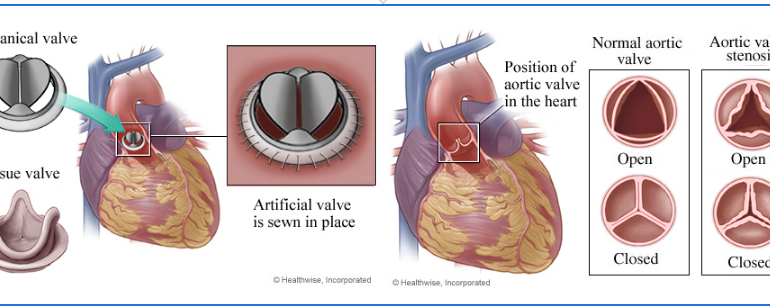Need to know that an arteriovenous (AV) fistula is a type of access used for hemodialysis. It can be used whether dialysis is performed at a dialysis centre or you perform home hemodialysis (HHD). An AV fistula is a connection between an artery and a vein creating a ready source with a rapid flow of blood. And know that the fistula is located under the skin and is used during dialysis to access the bloodstream.
Because fistulas use the patient’s own vessels and don’t require the long-term implantation of foreign materials like those required to make an AV graft or a catheter, they are the preferred kind of access. The AV fistula, created by the patient’s own blood vessels, can supply healthy blood flow for decades and is less likely to become infected than a catheter or experience clotting issues than a graft. Even while a fistula is simpler to manage than other access types, it still requires some maintenance. So, in order to maintain ideal blood flow for dialysis treatments, here are some guidelines for caring for a fistula. Your doctor will discuss your need for a fistula with you.
AV Fistula Care After Leaving the Hospital
- To lessen swelling and lower the chance of clotting, keep the arm straight and supported up on cushions so that it is above the level of your heart.
- Never lift anything heavier than 10 pounds.
- For the first 48 hours, keep the dressing dry. You can take a regular bath after 48 hours once the dressing has been taken off.
Exercising for your Fistula after Surgery
You need to know that an AV fistula must mature for several weeks or months before it can be used for hemodialysis, so after it is surgically created, your doctor will ask you to work on strengthening it. The sooner you can use your fistula, the more access arm exercises you undertake to help strengthen it. Your doctor can suggest specific finger and arm exercises to strengthen the fistula. Depending on where your fistula is, your doctor may recommend a different set of exercises. Fistulas typically develop in the upper or forearm. It’s crucial to speak with your doctor before beginning any workout.
Must Keep your Fistula Clean
You must keep your AV fistula clean once it is sturdy enough to be utilized for hemodialysis. Even though a fistula is less likely to contract an infection than other methods of dialysis, good hygiene is still crucial:
- Keep an eye out for any swelling or redness near the fistula.
- Inform your doctor right once if you feel any pain near the fistula.
- Fever can indicate an infection if it occurs.
- Just before each treatment, properly wash and dry your fistula arm. You will receive supplies from your dialysis center.
Proper blood flow through the fistula
Your AV fistula must allow blood to pass through easily. Be careful not to apply additional pressure to the area in order to lower the danger of blood clots. Your everyday routine might need to change as a result of this:
- Avoid wearing fitted shirts.
- Wearing bracelets or other jewelry that could limit blood flow to your access arm is not advised.
- Make sure the straps or handles on anything you’re carrying, including bags, luggage, and groceries, don’t go too tight around your fistula.
- Use the arm that does not have a fistula when getting your blood pressure taken or blood drawn.
- Make sure your head, pillow, or cushion doesn’t lie on your fistula whether you’re sitting or sleeping.
Need to Check your fistula blood flow
On a daily basis, check the blood flow through your AV fistula. Touch and sound are used for this. You should be able to feel the blood flowing through your fistula when you press your fingertips over it. This experience is the “thrill.” If the excitement ever feels different, inform your doctor. Use a stethoscope and lay the bell flat on your fistula to listen for blood flow. The term “bruit” (pronounced “broo-ee”) refers to the sound you are hearing. Any change in pitch could be a sign of thrombolysis (clotting) or fistula stenosis (narrowing). Whooshing or whistle-like sounds may alternate with this sound.
Since AV fistulas are healthier, simpler to manage, and more effective than alternative access methods, they are now used by more than half of all dialysis patients. Your dialysis treatments may be easier to manage and more productive if you take good care of your fistula with strengthening exercises, cleanliness, and daily checks for appropriate blood flow.
Seek medical advice immediately if:
- An AV fistula is bleeding.
- If the skin around the AV fistula is red or swollen or otherwise altered in appearance—including heated to the touch—this could be a symptom of infection.
- Over the AV fistula or in your hand, there is swelling.
- If you have chills or a fever higher than 100.5°F (38°C).
- If you can’t feel your pulse or if the pulse (thrill) in your AV fistula is slower than usual.
- You feel numb, chilly, or weak in your hands or legs.
- Your arm, leg, face, or neck are swollen.
- On the chest or upper arm, enlarged veins are visible.
- During dialysis, venous pressure rises, or the amount of blood going through the AV fistula declines.
- After the dialysis needles are removed, there is significant bleeding.
- Your monthly lab results have changed.





